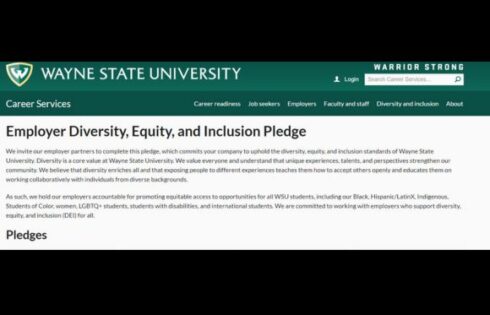
Larry Fuqua | Minding the Campus
It’s time that leftists take their heads out of the sand. Whites are not the only group of people that can be racists. Black racism—racism against whites by blacks—is real, and DEI makes it worse.
From birth through the first grade, I lived in Chicago Heights, Illinois, a suburb of Chicago. My neighborhood was overwhelmingly Italian. I was a kid of French descent with a very French-sounding last name from a southern family. I was an “outsider,” and I was made to know it.
Near the end of first grade, we moved to a black neighborhood in Chicago Heights—white families were moving out as we moved in. We lived on the “east side” for five years, from first to fifth grade. We were one of five white families on my block. Most of my friends and classmates did not look like me during this time. Race among my black friends and playmates was not an everyday topic for us. These were the best years of my childhood. I loved living there. Nearly all of my friends in this period were black. We were interested in riding our bikes, playing baseball, and having fun, and when we all started noticing girls, I noticed black girls—I even married one.
Regrettably, our initial unawareness of racial issues did not endure indefinitely. The shift in perception, however, was not, as leftists argue, a sudden awakening among whites. Instead, blacks began treating whites differently. In high school, I began to experience racism from some black students. These experiences have stayed with me over the years and became the foundation of my interactions within the black community. It wasn’t what I had hoped for, but it was the reality I encountered.
The racial turmoil intensified in high school when the “Black Power” movement began to gain traction among many black students, leading some to target their white peers without cause. Their demands and goals were met then and continue to be addressed today.
During my time in the Army from 1960 to 1963, there were a few racially charged fights, and after duty hours, social life was segregated. However, during these years, I noticed some positive changes. The Army did not tolerate racial discrimination, taunting, or displays of racial superiority or aggression. Racial transgressions were dealt with swiftly and, in my opinion, fairly.
Then, as I do now, had hoped for a time when racial tensions in America would calm, but thanks to the advent of “diversity, equity, and inclusion” (DEI), racial tensions persist.
DEI initiatives target whites in corporate America, media, and higher education. It’s a race agenda driven by activists employing aggressive tactics to achieve racial dominance for blacks, and it has successfully intimidated whites in these sectors. Leaders in academia, the press, social media, and some black pulpits, fearful of these tactics, have accepted terms that do not promote racial harmony but instead perpetuate division.
Having emerged from higher education, it prominently includes the widespread implementation of Critical Race Theory, the promotion of the 1619 Project, and the revitalization of affirmative action programs. Academics and other professionals advocate for reparations, the reinstatement of race quotas, and the reinforcement of the “separate but equal” doctrine. Support also extends to race-specific institutions, such as HBCUs, black media outlets, and professional organizations.
Calls for racial separation by blacks is permeating multiple spheres of American life and gaining momentum. The 1619 Project aims to recast America’s historical narrative from its inception to now. Influential sectors—including politics, media, and corporate America—increasingly align with these efforts, often due to concerns over potential business losses, legal repercussions, and societal disruptions. Many corporations and university departments have established positions such as “Director of Diversity and Inclusion,” frequently filled by black individuals, particularly black women, to advance diversity goals.
This corporate trend reflects a broader objective among black activists: not merely achieving racial parity but seeking racial dominance. The rise in such positions within companies, where over 80 percent are held by black women, underscores this shift. Thus, the notion of black supremacy as a goal should not be dismissed. The ongoing emphasis on racial issues, often framed in terms of black empowerment, reveals a more complex and deliberate effort to establish racial dominance rather than merely seeking equality.
Leftists must recognize that racism is not exclusive to any one race. Whites—and Asian Americans—are being excluded in favor of blacks under the guise of DEI. In some cases, even, as underscored by actions such as the promotion of the “black national anthem,” the waving of the red, black, and green “national black liberation flag,” and the removal of historical monuments, black dominance is the goal. The goal, however, should be equality, not a reversal of oppression. Furthermore, movements and institutions like Black Lives Matter, the new Black Panther Party, the Black Liberation Army, Historically Black Colleges and Universities, the National Association of Black Journalists, the Black News Network, BET, and the Black Congressional Caucus, while important for black identity and progress, must be held to the same level of scrutiny as so-called white institutions.
To achieve genuine racial harmony and equality, we must acknowledge and address black racism just as we do any other form of racism.
Originally published on July 31, 2024 by Minding the Campus
MORE: Psychology associations have lost their credibility
IMAGE: Ground Picture/Shutterstock
Like The College Fix on Facebook / Follow us on Twitter




Add to the Discussion